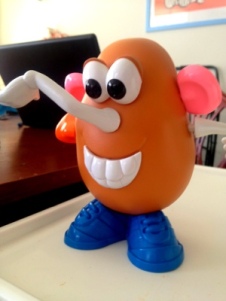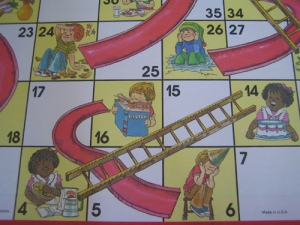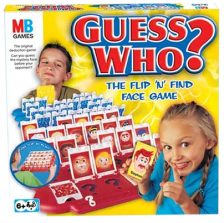How to use Mr. Potato Head and other store bought games for language activities
In speech therapy, we use a variety of resources to work on a child’s speech and language abilities. Games are a popular choice because they are fun and engaging. If you have ever attended a speech therapy session, you might have witnessed the speech pathologist using games that are at times not specifically speech-language pathology related. Rest assured the speech pathologist would have still incorporated relevant goals while playing those games with the child, and not just randomly pulled a game out of a hat.
Below are some of the common games found in SLP rooms that you can easily purchase from any major department store or toy shop, and how you – the parent/teacher/teacher aide – can effectively use them for speech and language development. It would be useful to know the speech and/or language goals your child is working on in speech therapy to be more targeted in your use.
Happy playing!
A classic favorite with toddlers and young children since it’s inaugural appearance in the 1950s, this toy continues to be one of the staple resources in an SLP’s resource cabinet.
What language goals you can use it for:
- Requesting: The teacher holds the bag of Mr. Potato Head features, and the student will have to ask for them to create his face.
- Following instructions: The teacher instructs the child where to place the body parts on Mr. Potato Head. E.g., “Put the mouth under his nose.”
- It would help if there was a variety of body parts so the child has to listen attentively for what type of mouth, for example, to put on the head.
- Understanding prepositions: E.g., “The eyes are between the ears”
A friendlier version (without snakes!) of another classic favorite with toddlers and young children, this game can be used in a variety of ways to promote speech and language goals.
What language goals you can use it for:
- Prepositions: “up” and “down.” You can also use the illustrations to work on other prepositions.
- Verbs: “is + -ing.” For example, having the kid say “The kid is going up the ladder” whenever s/he is eligible for that move. Again, if there are scenes on the board game, you can also have the child practice talking about what s/he sees.
- Nouns: Have the child practice naming the things/people s/he sees on the board.
- Sequencing: Chutes and Ladders has extremely simple rules. Because of that, I like to first explain to the child how to play this game and then have the child tell me. This would be useful for working on sequencing skills.
Hedbanz
Many older primary students enjoy this game. It’s also simple enough to make your own with some paper, scissors, and tape.
What language goals you can use it for:
- Vocabulary/Word finding: This is an excellent game for word finding. Students have to listen attentively to the descriptions from their friends and using them, try to guess the word on their headband. Have cue cards ready (see my resources page for description cues) to prompt students on the types of descriptions they can use.
This is another game for middle to older primary school students. Some students seem to take awhile to understand how to play the game, but when they do, they just won’t want to stop playing it!
What language goals you can use it for:
- Questions:More complex question structures such as “Does your…” or “Is your…”
- Describing: Students have to learn to use descriptors in their questions. For example, “Does your person wear glasses?” “Does he have black hair?”
You can also replace the cards with objects and play “Guess What” instead. A creative SLP has created a stack of ready made replacement cards on teacherspayteachers.com. (Search “Guess Who! Articulation Game Inserts”). These cards are articulation based but can also be used for language (e.g., nouns and adjectives).
Memory
Another simple game that is a favorite with younger kids, this game is versatile and can be used for a whole host of different goals. Speechies love to use it with articulation goals and language ones, too!
What language goals you can use it for:
- Adjectives: The student has to describe what they see on their cards. E.g., “I see/have a yellow duck.”
- Singular vs. Plurals: The student has to say what they see when they have a pair. E.g., “I see two apples.”
A version of the popular game, Ker Plunk, this is nice because the chicken seems to appeal to the younger kids.
What language goals you can use it for:
- Verbs: “-ing” Have the student say “I am pushingthe feather through.”
- Nouns: I give the students a category and have them think of words that belong in that category before they can get a turn to push the feather through.
- Prepositions: Since this is in 3-D, the game is also great for learning words such as “through,” “above,” “under,” “in,” “on,” “above,” and “below.”
Do you have any other store bought toys your kids enjoy and is great for speech and language development?







Leave a comment